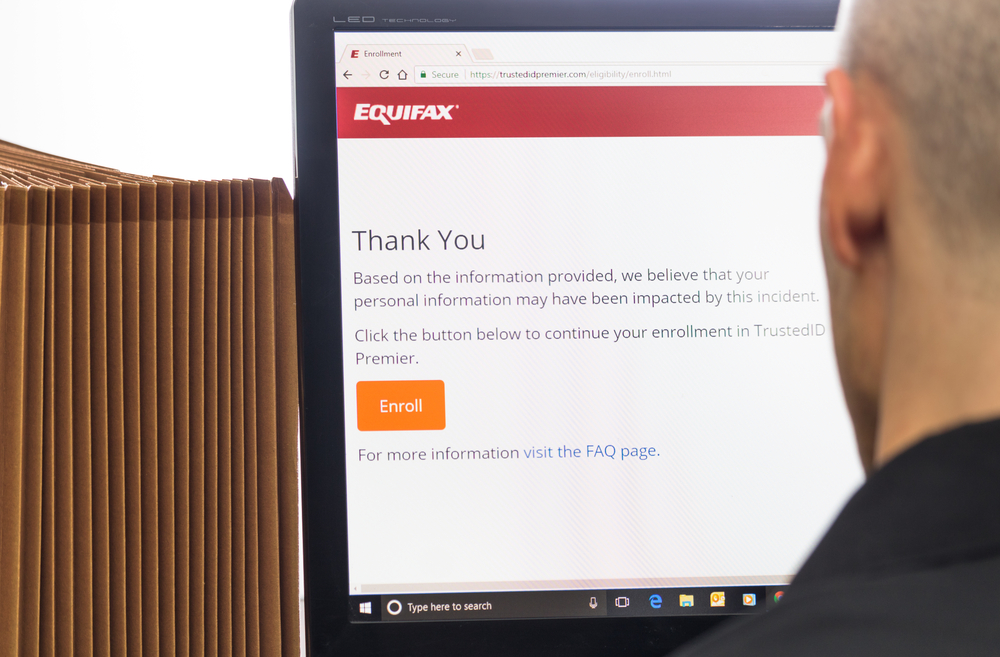What was once an obscure app that you only knew about if you worked in a big office, Zoom has quickly risen in the global lexicon. Now, instead of getting on a video call, we Zoom each other. Thanks to the coronavirus pandemic, which kept people at home, Zoom’s ability to bring them back together gave rise to its use in schools, churches, businesses, government agencies, and homes.
But some suspect business practices and lax security measures have also made Zoom a target for consumer and investor lawsuits. Find out what you need to know if you have been affected by this popular program.
- What Is Zoom?
- Zoom Lawsuits
- What Should I Do if I Have Been Affected by Zoom?
- How Do I Know if I Qualify to Be Part of a Zoom Lawsuit?
- How Do Zoom Lawsuits Work?
- Do I Need a Lawyer to Join a Zoom Lawsuit?
- How Long Does It Take to Settle a Zoom Lawsuit?
- What Is the Statute of Limitations on Zoom Lawsuits?
- How Much Can You Get From a Zoom Lawsuit?
- How Long Does It Take to Get Your Money After You Settle a Zoom Lawsuit?
- Have Your Zoom Case Reviewed for Free
What Is Zoom?
Before it was poised to become synonymous with the practice of video chatting, Zoom was a simple business tool used by companies large and small around the globe to connect across distances. Thanks to the COVID-19 pandemic, that’s all changed, as Zoom has become the default method of video chatting for millions of people.
Company History
For most of its nine-year existence, Zoom was a tool used predominantly by business professionals. Founded in 2011 by a former engineer, up until 2020, Zoom’s video conferencing tools were most at home in a board room, connecting workers and businesses across time zones on a face-to-face basis.
The easy-to-use interface quickly caught on with corporate workers, which propelled Zoom to a more than $350 million initial public offering (IPO) in 2019. An estimated 2,500 people work at Zoom with offices in North America, Europe, Asia, and Australia.
In fiscal year 2019, Zoom reported total revenue of more than $600 million, which represented a nearly 90% increase from the previous year. All this before the company had what would undoubtedly be its global coming-out party in the form of pandemic-related lockdowns.
Video Conferencing Market
Video conferencing has grown increasingly popular in offices around the globe because of its ability to enable the type of face-to-face communication that previously could only happen if you got on a plane.
The increasing globalization of commerce and the rise of remote work mean that for the average company, it’s crucial to have easy tools for quick meetings or collaboration. Zoom is one of a handful of major providers of such tools, including Skype and WebEx.
Before the coronavirus pandemic, tools like these were mostly used in offices — and most big companies had adopted them. In fact, a 2019 survey by Forbes magazine found that some 80% of large corporations employ some form of video conferencing tools, with as many as four in 10 companies using video conferencing for up to one-quarter of their communication.
Impact of COVID-19
Until 2020, standalone video conferencing tools like Zoom were largely the purview of corporate America. Then came a pandemic that closed offices, schools, churches — even Congress. People around the world suddenly were rushing to find ways to collaborate and communicate.
Companies in this market, which was already expanding, began to see people flock to their services, and this is especially true for Zoom. Despite video chatting tools being built into mobile phone operating systems, Zoom experienced the biggest growth rate among video platforms.
Flixed, a blog covering cord-cutting and streaming media, found that Apple’s FaceTime, which is built into devices like the iPhone, didn’t experience a quarantine boost compared to how much people were using it before (about 37% in both time periods).
But among all video chat tools the site asked people about, Zoom was the biggest winner, with about 55% of respondents saying they’d used Zoom since the pandemic compared to just 41% before.
Controversies
While Zoom has seen its user base increase dramatically, this growth hasn’t come without its drawbacks.
Shortly after periods of COVID-19 quarantine began, a new phenomenon began to enter into daily life — Zoombombing. Zoombombing, sometimes called Zoom raiding, is when an uninvited person enters a Zoom meeting. Their purpose is typically to troll or harass those on the call, with some instances resulting in disturbing imagery being broadcast to meeting participants. (Descriptions of these images are not for the faint of heart.)
The trauma of being surprised with disturbing imagery aside, instances of Zoombombing highlighted weaknesses in the platform’s security measures. Those weaknesses have inspired multiple lawsuits from users and company shareholders.
Additionally, Zoom has been at the center of allegations that it has inflated its user base in order to make the platform appear more successful and, therefore, profitable. Pre-pandemic, the company claimed to have had 10 million daily users, a figure it said grew to 300 million in the wake of mass lockdowns.
But after an investigation by digital publication The Verge, Zoom admitted that the 300 million figure referred to daily Zoom meeting participants and not actual users.
Zoom Lawsuits
Several lawsuits have been filed against Zoom, both for its business practices and alleged security vulnerabilities that exposed users to traumatic experiences, and the company recently faced an investigation by federal authorities.
Legal Status
Zoom has been on the receiving end of added scrutiny from federal authorities since before the pandemic began. In November 2020, the Federal Trade Commission (FTC) announced that the company had agreed to implement additional security measures. This agreement came after the agency accused the company of several serious lapses and deceptive practices that date back to 2016.
The FTC alleged the following about Zoom and its practices:
“ … since at least 2016, Zoom misled users by touting that it offered ‘end-to-end, 256-bit encryption’ to secure users’ communications, when in fact it provided a lower level of security.”
End-to-end encryption is common in internet communication, as it ensures that no other parties, even the platform provider hosting the service, can read the communication. The agency said that in reality, Zoom used lesser levels of encryption than advertised, which exposed customers to levels of risk they might not otherwise have assumed.
This also made Zoom’s product appear more secure, serving to make Zoom appear to be a more attractive company.
As part of the settlement announced by the FTC, Zoom agreed to take steps to improve the security of the platform or potentially face financial penalties if it violates the agreement. As of the end of 2020, the FTC was still gathering public comments on the agreement, but if it’s ratified, Zoom would face penalties of up to $43,280 for every further violation.
Lawsuit History
Aside from the potential penalties Zoom could face if it violates its agreement with the FTC, assuming the agency ratifies it, the company was slapped with several major lawsuits in 2020 alone.
Here is a rundown of legal action against the company in 2020:
Shareholder Class Action
One of the company’s shareholders has initiated a class action lawsuit, filed in the U.S. District Court for the Northern District of California. The man, Michael Drieu, alleges that the company misled investors about the security level of its platform.
The suit seeks to establish a class of individuals who were similarly affected, defined as those who have purchased or acquired Zoom stock since its April 2019 IPO, and alleges that they were misled into purchasing stock in the company at an artificially inflated price.
Privacy Lawsuits
Several individuals have sued Zoom over Zoombombing incidents, and so far, eight cases have been consolidated before U.S. District Court Judge Lucy Koh of the U.S. District Court for the Northern District of California. Among those cases are incidents in which meeting participants were exposed to violent pornography, as well as an incident in which men were spying on women in a private exercise class.
Zoom has defended itself by saying, not in these exact words, that it’s not responsible for what people do on its platform, and it’s asked Judge Koh to dismiss the privacy cases currently before her partially on those grounds.
Consumer Rights Violations
Zoom is facing at least two other class action lawsuits from consumers who say the company collected and disclosed private customer data to third parties in violation of the California Consumer Protection Act (CCPA). An investigation by Motherboard, a Vice publication, found that Zoom’s iOS app was sending customer information, including their time zone, city, and device information, whenever a user opened the app on their device. After Motherboard’s report, Zoom indicated that it had removed this bit of code from the app, but it’s unknown how this change might affect the class actions over CCPA violations.
What Should I Do if I Have Been Affected by Zoom?
Zoom added millions of new users in 2020, especially counting those who attended but didn’t host a meeting, so chances are good that you’ve used Zoom or clicked on a link to join a meeting. Or perhaps you’re one of the people who purchased stock in the company after its IPO, helping increase its total market valuation.
The way in which you’ve been affected by the company and its product will determine what you should do next. Unfortunately, it may not be possible to completely avoid Zoom, especially if you use it for work, but there are some simple next steps to take in any event.
If You Were Zoombombed
If you’ve been part of a Zoom meeting that was hijacked by trolls or other seeking to inflict emotional distress, as difficult as it may be, it’s important to keep a digital video record of the meeting.
The organizer should be able to record the meeting, and depending on the platform, users may be able to record it as well. If your meeting was required for your job and your supervisors were not present, be sure to inform them of what happened, and encourage the IT department at your office to re-double efforts to keep Zoom calls private.
For those whose information was shared with a third party, which mostly applies to people who used Zoom on iOS or Android devices, you could consider deleting the program from your device, though Zoom has indicated that it deleted the snippet of code that permitted the app to share such information.
If You Feel Misled Into Investing
And for shareholders who feel duped by these issues or any others into investing in the company, consult your financial adviser to determine whether it’s in your long-term best interest to sell your Zoom stock. Be sure you keep records of when you purchased the stock, how much you bought, and at what price and, if applicable, the corresponding information on the stock sale.
In all these cases, those initial steps can be followed by a consultation with a qualified attorney who may be able to evaluate your case and give you some advice on whether the damage you experienced by using Zoom merits a legal action. Fill out the form on this page to receive a free consultation.
How Do I Know if I Qualify to Be Part of a Zoom Lawsuit?
Anybody who has been harmed by using Zoom or purchasing stock in the company could potentially file a lawsuit against Zoom, and people in both groups already have filed claims that are now making their way through the court system.
So far, the individuals bringing these claims encompass people who used Zoom and were subjected to upsetting Zoombombing incidents, consumers whose information was shared with third parties without their knowledge, and investors who could stand to lose money given the company’s troubles and prior claims.
How Do Zoom Lawsuits Work?
Currently, the legal cases against Zoom are all in their early stages, and it’s reasonable to assume they will proceed like any other lawsuit.
It’s important to note that so far, most of the plaintiffs who’ve filed cases so far are seeking to establish class actions, which could mean that in the future, it may be possible to seek compensation directly from Zoom in the event of a major settlement. However, that’s a long way off, and such settlements typically occur only after several high-profile or big-ticket court decisions.
As we’ve mentioned, the three buckets of plaintiffs so far include consumers who were part of hijacked meetings, users whose information was shared against their knowledge, and company investors.
Do I Need a Lawyer to Join a Zoom Lawsuit?
Yes, given the current stages of each of the lawsuits against Zoom, the only way to have your voice heard is to consult with an attorney. Also, it’s worth pointing out that even though several of these cases are proceeding as class actions, even without an attorney, one wouldn’t simply “join” the lawsuit because every case is unique.
Finally, because there are several types of potential victims in the Zoom cases, it’s possible you could fall into multiple categories, so the best way to make sure all your bases are covered is to consult with a qualified local attorney.
How Long Does It Take to Settle a Zoom Lawsuit?
No lawsuits against the company have been settled so far, though Zoom has agreed initially to a settlement to end a federal investigation into alleged security lapses in the program that date back to 2016.
As part of that settlement, which has not yet been ratified by the Federal Trade Commission, and so isn’t being enforced, the company has agreed to beef up security protocols or face fines of more than $40,000 per future incident.
Given the speed with which that settlement was reached (the FTC’s formal investigation didn’t begin until May 2020 and the settlement was announced in November 2020), it’s possible the company will not drag proceedings out once they begin in earnest.
On the other hand, Zoom has attempted to use federal regulations to shield itself from responsibility, specifically a provision known as Section 230 of the Communications Decency Act, which says that platforms and publishers cannot be held responsible for the content shared by third parties.
A judge has yet to rule on whether Section 230 protects Zoom from liability in the Zoombombing cases that have been filed.
What Is the Statute of Limitations on Zoom Lawsuits?
While consumers have many rights when it comes to seeking compensation from companies over harm done by their products, in every case, there’s a limited amount of time people have to file lawsuits. Known as the statute of limitations, this time limit varies by state and by the type of claim the consumer has filed.
For example, lawsuits related to emotional injuries, perhaps such as those suffered by individuals who have been traumatized by seeing upsetting imagery during a Zoom call, have a statute of limitations that ranges from one year in Kentucky, Louisiana, and Tennessee, to six years in Maine and North Dakota.
Consulting with a qualified attorney in your area can help ensure that your window for filing a lawsuit does not close before you have time to make your case.
How Much Can You Get From a Zoom Lawsuit?
Since they are in their early stages, it’s not yet known what a reasonable average sum will be for a settlement or judgment in a lawsuit against Zoom. However, the FTC’s settlement with the company over its claims to provide robust security, which the agency found to be false, called for a fine of more than $40,000 per incident that violates the company’s agreement with the agency.
How Long Does It Take to Get Your Money After You Settle a Zoom Lawsuit?
No settlements have been reached in any of the lawsuits filed by consumers or investors, so we don’t know yet the timeline users could expect to encounter if they file a lawsuit against Zoom. However, in any legal case that ends in a settlement, part of that agreement sets out a schedule by which damages must be paid.
Have Your Zoom Case Reviewed for Free
If you used Zoom’s video conferencing app or purchased stock in the rising-star company, you could be entitled to compensation over Zoom’s lax security and marketing practices, among other areas. To have your case against Zoom reviewed for free, fill out the form on this page.





